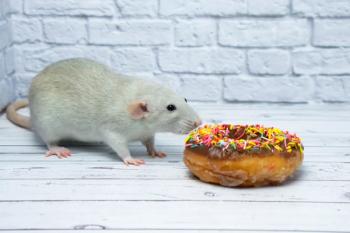
UHPSFC–MS Analysis of Complex Lipid Samples
Researchers at the University of Pardubice in the Czech Republic have developed a high-throughput ultrahigh-performance supercritical fluid chromatography–mass spectrometry (UHPSFC–MS) method that can analyze lipidomic samples in as little as 6 min.
Researchers at the University of Pardubice in the Czech Republic have developed a high-throughput ultrahigh-performance supercritical fluid chromatography–mass spectrometry (UHPSFC–MS) method that can analyze lipidomic samples in as little as 6 min.1 According to the study published in the journal Analytical Chemistry, the method could be applied to the analysis of large sample sets in clinical research.
Lipids are hydrophobic molecules that play a key role in the cell-signalling pathways and in maintaining the structure of membranes. Lipidomics - the large-scale study of lipids - is a growing area in clinical research because it is becoming increasingly recognized that lipids can play a role in disease. Lead author of the study Miroslav Lisa told The Column: “Lipidomics has grown in interest in the last decade due to connection of lipid metabolism with some serious human diseases, such as cancer or diabetes and they are now extensively studied as potential biomarkers of these diseases.”
The two techniques most commonly used in lipidomic sample analyses are shot-gun mass spectrometry (MS) and highâperformance liquid chromatography–mass spectrometry (HPLC–MS). Over recent years SFC has experienced a revival, because it is a “greener” technique than high performance liquid chromatography (HPLC) and can offer shorter separation times. Lisa said: “Since the new generation of SFC instruments have been introduced onto the market, SFC shows a great potential as the comprehensive and high-throughput screening method for the large number of samples in different -omic fields including lipidomics. SFC provides fast analysis of a broad spectrum of lipids, which perfectly fits with the requirements in current lipidomic analysis.”
The study authors developed an approach combining an UHPSFC separation with an electrospray ionization mass spectrometry (ESI–MS) detection method using a 1.7-μm particle size column. The UHPSFC step separated lipid samples into different classes based on their retention time, and individual lipid species were identified using positive-ion and negative-ion MS. In the paper, the authors note that a polar modifier was required to increase the polarity of the mobile-phase and that getting the composition right was one of the most important parameters.
As a proof-of-concept, the method was applied to the analysis of porcine brain samples. According to the paper, 24 lipid classes containing 436 lipid species were separated and identified from pooled samples. In terms of future work, Lisa said: “We are planning on applying our method for clinical studies with the goal to describe differences of lipidomic composition among healthy volunteers and patients with different diseases.” - B.D.
Reference
- M. Lisa and M. Holcapek, Analytical Chemistry DOI: 10.1021/acs.analchem.5b01054 (2015).
Newsletter
Join the global community of analytical scientists who trust LCGC for insights on the latest techniques, trends, and expert solutions in chromatography.




